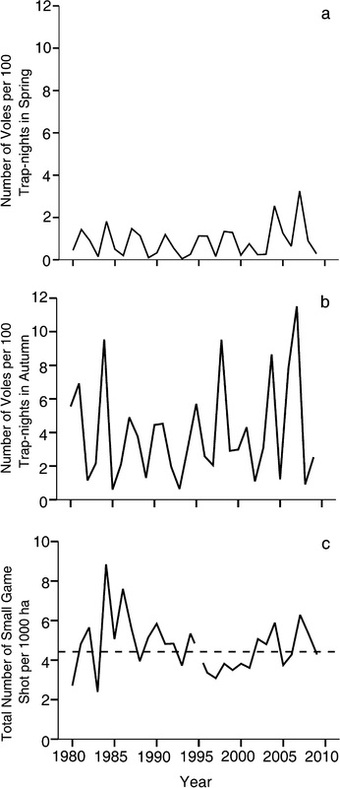Master Thesis Project
Eirini - Lamprini Daouti
Linking movement to breeding success in Golden eagles.
The golden eagle (Aquila chrysaetos) is a long-lived raptor with slow reproduction rate mainly inhabiting the mountainous environments of northern hemisphere. The species is exposed to several threats and currently listed as Near Threatened in Sweden. Monitoring the responses of the species to several conditions is critical since raptors are apex predators indicative of the health of ecosystems. This project is aimed at linking the citizen science monitoring of Golden eagles breeding to their movement ecology. The project will run from January 2016 to January 2017.
Monitoring
Population changes
Population synchrony with prey species
|
The number of snap-trapped voles (bank voles [Myodes glareolus] and field voles [Microtus agrestis]) in (a) spring and (b) autumn, 1980–2009 in Västerbotten County, northern Sweden, and (c) the pooled number of the principal prey species for the Golden Eagle, i.e., small game, mountain hare (Lepus timidus) and Tetraonidae species, as indexed by hunting bag statistics. The dashed line indicates the mean number of small game shot per hunting year throughout the study period. Source: Moss et al. (2011) J Rap. Res.
|
- Annual Census
- Genetic Monitoring


